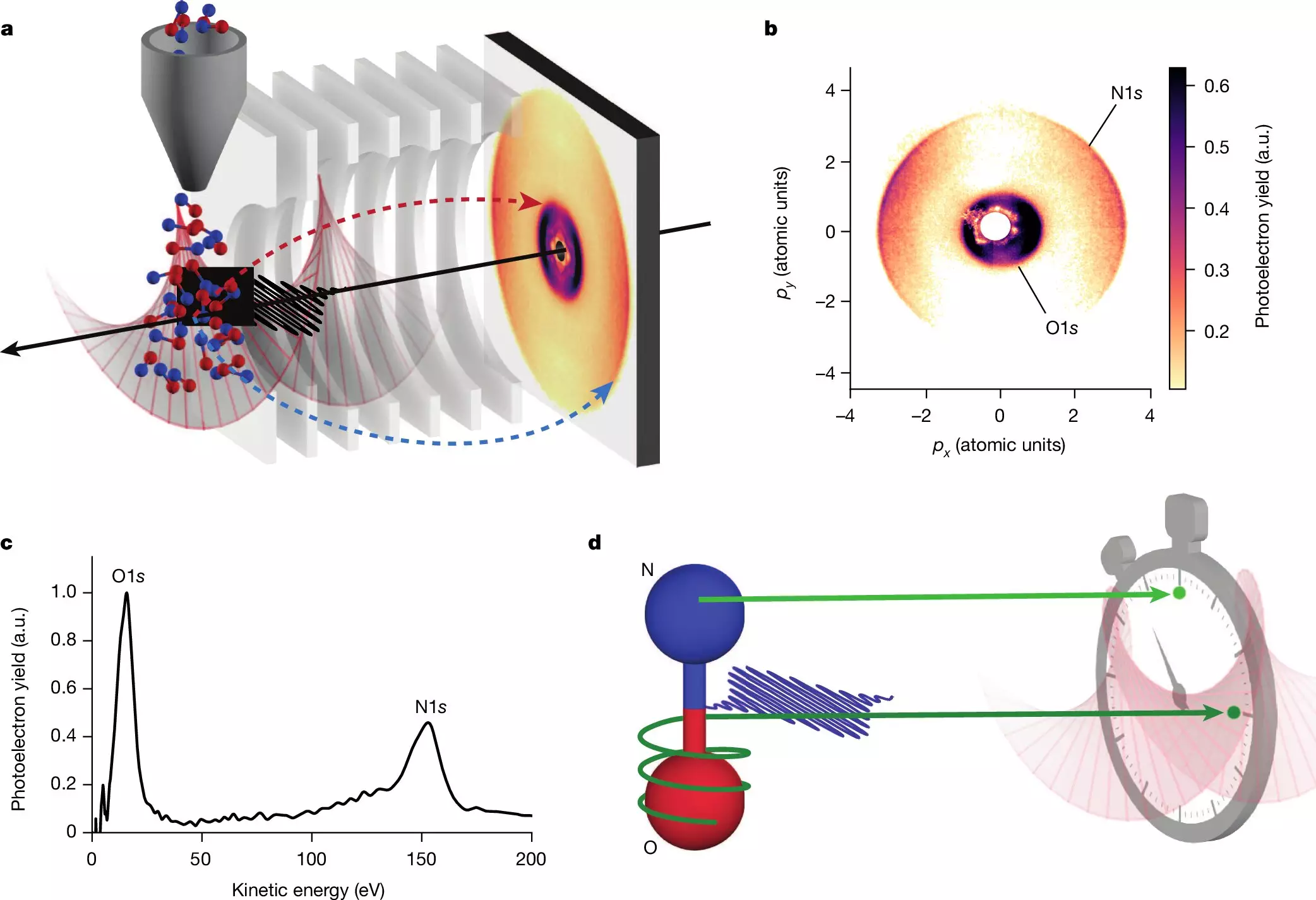In a groundbreaking achievement, an international cadre of physicists has unveiled their findings regarding the minute time delays in electron activity that occur when molecules are exposed to X-rays. This pioneering research not only expands our understanding of molecular dynamics but also marks a significant leap forward in the realm of attosecond science, which studies events on the scale of attoseconds—one quintillionth of a second. By employing cutting-edge laser technology to generate intense X-ray bursts, the team was able to explore the intricate interactions within atoms, revealing a phenomenon previously hidden from detection.
The study’s co-author, Lou DiMauro, a distinguished physics professor at The Ohio State University, emphasizes the importance of X-rays as an effective probe of molecular behavior. He notes that these high-energy photons allow scientists to capture a series of “stop-action snapshots,” providing insights into a molecule’s evolution during a chemical reaction. Such capabilities open new avenues for research in diverse fields, tailoring our comprehension of intricate molecular architectures and their interactions.
Investigating Electron Interactions
The excitement of this research stems from the discovery of unexpected delays in electron ejection processes, specifically involving a particle known as the Auger-Meitner electron. These secondary pauses, measured as extending up to 700 attoseconds, challenge prior assumptions about the dynamics of deeply bound electrons in chemical structures. Alexandra Landsman, another co-author of the study and a physics professor at Ohio State, highlighted the complexity embedded in these interactions. This complexity suggests that current theoretical models may not be adequate to fully capture the nuances of light-matter interactions, requiring the development of more sophisticated frameworks.
The ability to observe these minuscule delays paves the way for future investigations into the subtleties of electron dynamics. With the advent of technologies like the Linac Coherent Light Source (LCLS) at Stanford University’s SLAC National Accelerator Laboratory, researchers now have improved tools at their disposal. These technological advancements facilitate the generation and visualization of electron pulses, significantly easing the task of studying attosecond phenomena, which was once hindered by limited instrumentation.
The implications of this research extend far beyond academic curiosity. As scientists deepen their understanding of the intricacies involved in electron interactions, they may uncover pathways to revolutionary advancements in medical diagnostics, particularly in early cancer detection. The ability to analyze intra-particle behavior could allow for the development of innovative techniques to identify molecular markers indicative of blood cancers or reclusive malignant tumors.
Moreover, the study suggests that integrating experimental observations with theoretical constructs enables researchers to probe the minutiae of matter at some of the smallest scales imaginable. DiMauro’s anticipation for exploiting attosecond pulses resonates with the scientific community, as it promises to unveil insights into fundamental aspects of both engineering and natural processes.
While this study stands as a significant milestone, it also highlights the necessity for continuous exploration and innovation in attosecond science. The revelations surrounding electron dynamics signal a pivotal moment for physicists, pushing the boundaries of what is known about atomic behavior. The complexity noted by Landsman signifies a call to action for the scientific community to revisit and refine existing theoretical models that govern light-matter interactions.
As attosecond research evolves, the potential for further breakthroughs appears boundless. Whether in fundamental physics or practical applications such as enhanced diagnostic techniques, the discoveries birthed from this line of inquiry hint at a transformative shift in how we understand and interact with the physical universe. The excitement surrounding this line of research serves not only to inspire the current generation of scientists but to pave the path for the next, encouraging a future rich with discovery and innovation.

